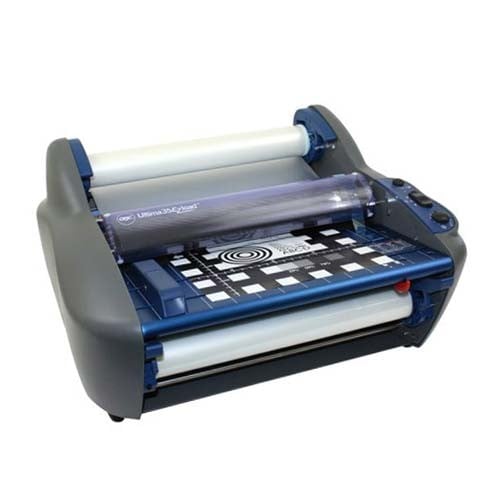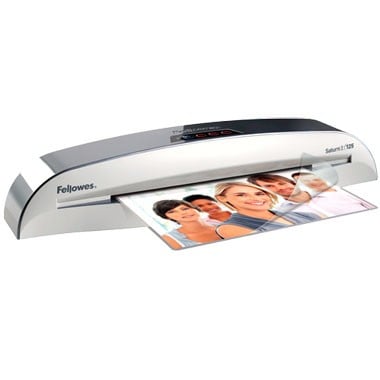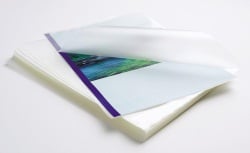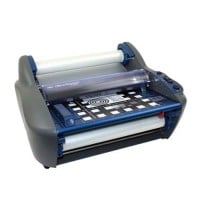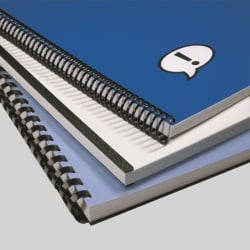MyBinding Knowledge Base
- Binding (248 Article)
- General Binding (42)
- Plastic Comb Binding (57)
- Fastback Binding (59)
- Perfect Binding (2)
- Modular Punching (8)
- Zipbind (3)
- Twin Loop Wire (13)
- Coil Binding (22)
- Thermal Binding (14)
- Strip Binding (1)
- VeloBind (4)
- Binding Covers (14)
- Proclick Binding (10)
- SureBind (4)
- Screw Post (2)
- Hole Punches (2)
- Staplers (4)
- Komtrak Insprial Binding (2)
- Paper (1)
- Rhin-O-Tuff (5)
- Binding Machines Comparison (17)
- Laminating (109 Article)
- General Laminating (26)
- Roll Lamination (16)
- Pouch Lamination (36)
- Pouch Board Laminator (3)
- School Laminator (3)
- Foil Laminating (3)
- Royal Sovereign Laminators (10)
- Laminators Comparison (3)
- Boards (11 Article)
- Bulletin Boards (3)
- Whiteboards (5)
- Chalkboards (1)
- Paper Shredders (44 Article)
- General Shredding (35)
- Industrial Shredders (1)
- Cross-Cut Shredders (2)
- Cardboard Shredders (1)
- Multimedia Shredders (1)
- Personal Shredders (1)
- High Security Shredders (2)
- Ring Binders (9 Article)
- Specialty Binders (2)
- Reinforced Paper (1)
- Health Care Punched Paper (1)
- Perforated Paper (2)
- View Binders (1)
- Index Tabs (9 Article)
- Index Tab Dividers (2)
- Copier Tabs (4)
- Pocket Folders (1)
- Custom Index Tabs (1)
- Pre-Printed Index Tabs (1)
- Paper Handling (37 Article)
- Paper Folders (9)
- Paper Joggers (2)
- Guillotine Cutters (4)
- Rotary Trimmer (3)
- Electronic Paper Cutters (1)
- Corner Rounders (2)
- Paper Scoring (2)
- Paper Drill (2)
- Booklet Makers (3)
- Stack Cutters (1)
- Paper Handling Equipment Comparison (5)
- ID Accessories (12 Article)
- Badge Holder (1)
- Lanyards (8)
- Badge Reels (1)
receive
$5off
*On order $25 or more.
What should I know about laminating pouches?
One of the main problems with paper documents is that they can only withstand a certain amount of handling. Over time, paper can become torn, stained, and so on. It will also yellow if enough time passes. That’s why pouch laminators were invented. These devices make it possible for everyone to protect their documents with laminating film.
If you have a laminator, you won’t need very many supplies to use it. In fact, you only need to have a selection of laminating pouches. A pouch is basically just a piece of plastic that’s folded in half. You stick your document in it and then ruin it through your laminator. These supplies are very easy to use but you need to keep some things in mind when shopping for them. Here’s a quick guide to choosing laminating pouches so you can choose ones that are right for your needs.
- Select your size. When you’re looking for laminating pouches, you need to think about what size would be best for your work. Pouches come in many different sizes. Some are small enough to laminate ID cards and others are large so you can work with things such as placemats. (There are medium-sized ones too. They’re handy if you want to laminate a letter-sized item.) No matter what you’re laminating, make sure to choose a pouch that’s big enough you give you a 1/4” border around the item. This ensures that the pouch will be fully sealed after it’s gone through your device.
- Determine the thickness you need. One of the most important things to know about laminating pouches is that they come in different thicknesses. The unit of measurement used to determine thickness is the mil. A mil represents a thousandth of an inch, so you can imagine that pouches aren’t really that thick when it comes down to it. Pouches can range in thickness from 3 to 10 mil. You need to know this because not every laminator can handle all pouches, so be sure to choose some that will work with your device. Also, keep in
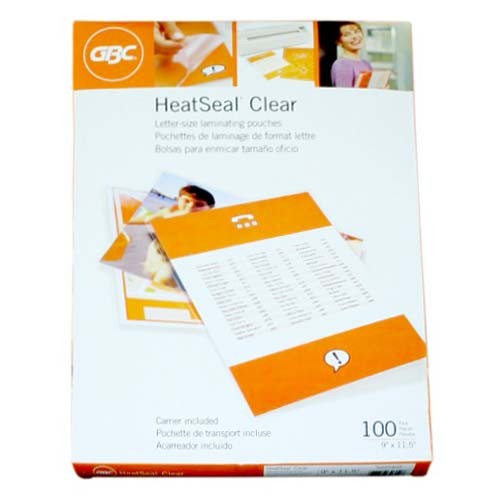
- Think about the level of quality you want. Not all pouches are created equal – some of them are higher quality than others. Naturally, the ones that are less expensive tend to be the ones that leave something to be desired. That’s why it never hurts to get the best laminating pouches you can afford. They’re made out of better materials and they’re also much more durable so your work will stay protected for a long time. Some of the best laminating pouches are made by GBC, so be sure to look for them when you’re selecting your supplies.
- Consider what type of finish would suit your document. Appearance is important when you laminate, especially if you’re going to be sharing your work in a meeting or giving the document to your customers or boss. Pouches can have either a matte or glossy appearance so you can choose the one that’s the most suitable for your work. Matte supplies look sophisticated and they can be written on, which makes them great for documents that will be used in meetings. (If you write on them with a dry-erase marker, you’ll be able to re-use the same document again and again. Just wipe it clean.) On the other hand, glossy supplies look flashier and can be easier to obtain. So decide which finish is best for your needs early in the process, especially if you think you’ll need to order your supplies. The last thing you need is to be without the pouches you need when an important deadline is right around the corner.
- What type of corners do you want? Most laminating pouches have rounded corners. However, you can get ones with squared corners if you prefer. The corners aren’t a super important thing to consider, but it doesn’t hurt to know that there are two options available. You may even prefer to keep both kinds of pouches on-hand so you can use a certain type for different documents.
- There are other attributes you can consider. We’ve already covered the most important characteristics to consider when choosing your laminating pouches. However, there are a couple more things you may want to think about when picking out your supplies. First, some pouches have colored backs. They can be useful if you want to give your work some extra pizazz. (Plus, they can make it easier to identify your document.) There are also supplies that have sticky backs. If you use these, you can peel the release liner off once the item has gone through the machine to reveal the adhesive. You can then stick the document to something such as posterboard. (These supplies are perfect for making visual aides.) Finally, some pouches have colored borders printed on them so they’re perfect for framing things like photographs and certificates. The borders are often whimsical and depict cheery items such as sunflowers and balloons. Working with these pouches can be a lot of fun, so why not give them a try?
- Protect your machine. No matter which pouches you end up using, be sure to use a carrier. A carrier is really just a cardboard sheath in which you stick your document. The carrier prevents the machine’s interior from becoming coated with adhesive. This prevents a lot of wear and tear on the machine. It also makes everything go much more smoothly. There’s a carrier in every box of laminating pouches so they’re easy to get.
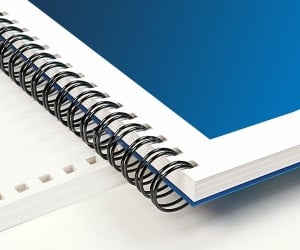
< Over the years, a number of customers have asked me whether they can use twin loop wire with their plastic comb binding machine. These customers often don’t want to have to buy a brand new machine but like the look and feel of twin loop wire binding. However, the answer to their question isn’t as simple as it seems. You see, they actually do make twin loop wire that is designed to work with the plastic comb binding hole pattern. With that said, if you want to use these wires you are going to need a way to close the wires. What is Spiral-O Wire? Let me explain a little bit more…There is a product that we carry called Spiral-O Wire. This wire has 19 loops and is designed to work with the hole pattern from a plastic comb binding machine. Spiral-O Wire is sometimes called Wire Combs or Ibico Wire and was originally designed for use with some of the older Ibico binding machines. A number of the older Ibico plastic comb binding machines also included a twin loop wire closer on the front of them to allow users to use both plastic combs and wire. This 19 loop wire was designed for this purpose. What Equipment is Needed? As the Ibico brand has been phased out by GBC and all of the older Ibico plastic binding machines have been replaced with new models, they no longer have the twin loop wire closer on the front of them. This presents a problem in trying to use these spiral-o wires since you can’t use the wires without a way to close them. One of the only options left is to purchase a Twin Loop wire closer. However, since twin loop wire closers are not incredibly cheap this option usually only appeals to users who have larger electric plastic comb binding machines. Otherwise, it is often advisable to simply buy a low end 3:1 pitch twin loop wire binding machine (the supplies are cheaper). This being said, if you have one of the older Ibico binding machines that has a wire closer included you are in luck. The Spiral-O binding supplies that we carry will work perfectly with your machine and you will be able to use both plastic combs and wire depending on your needs. These Spiral-O binding supplies are available in Black, Silver, White, Blue and Red and in sizes up to 1″ in diameter. If you aren’t sure what type of wire binding supplies that you need to work with your machine simply give us a call. Our trained sales representatives will be glad to help you find the correct supplies for use with your machine.(Read More)
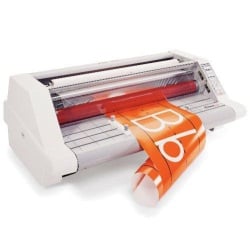

Loading...


